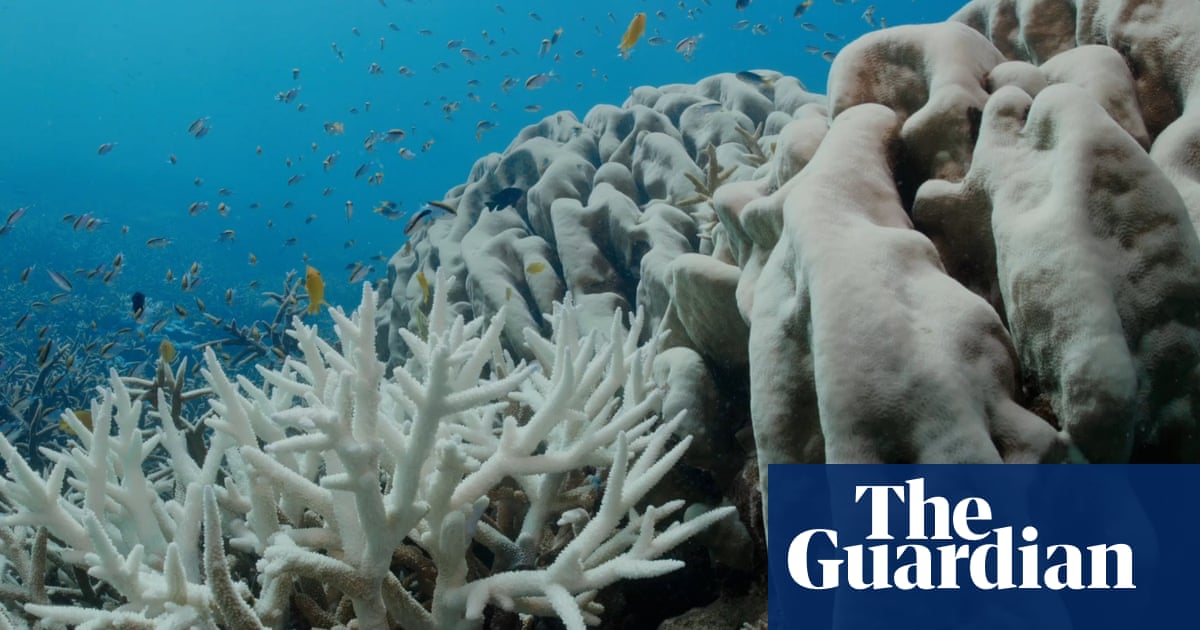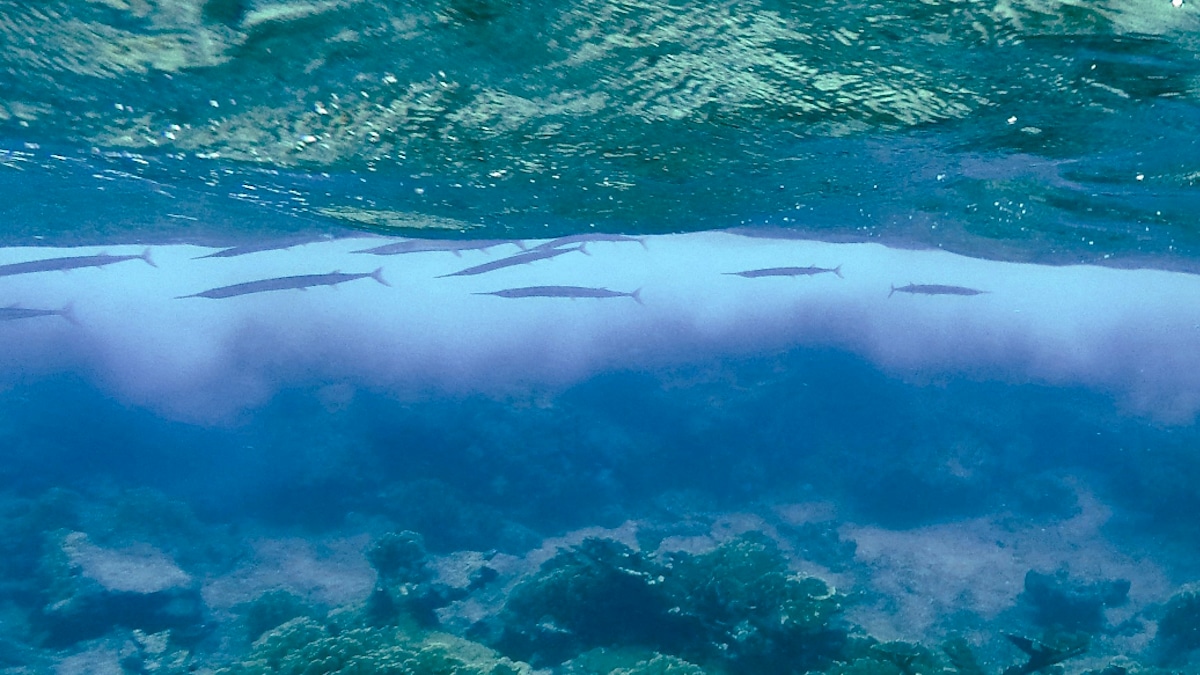Marine researcher says widespread event is 'absolutely heartbreaking' and that Australia is 'running out of time' to save the reef

www.theguardian.com
Concern that the Great Barrier Reef may be suffering the most severe mass coral bleaching event on record has escalated after a conservation group released footage showing damage up to 18 metres below the surface.
Dr Selina Ward, a marine biologist and former academic director of the University of Queensland’s Heron Island Research Station, said it was the worst bleaching she had seen in 30 years working on the reef, and that some coral was starting to die.
The Great Barrier Reef Marine Park Authority last week said aerial surveys of more than 1,000 individual reefs revealed more than half were rated as having high or very high levels of bleaching, and a smaller number in the south – less than 10% of the total – had extreme bleaching. Only about a quarter were relatively unaffected.
It confirmed the 2,300-kilometre reef system was experiencing its fifth mass bleaching event in eight years. The authority said sea surface temperatures had been between 0.5C and 1.5C hotter than expected for this time of year.
The Australian Marine Conservation Society on Thursday released video and photos that it said showed bleaching on the southern part of the reef extended to greater depths than had been previously reported this year.
Ward said the impact of bleaching had been extensive across 16 sites that she visited in the reef’s southern section, affecting coral species that had usually been resistant to bleaching. Some coral had started to die, a process that usually takes weeks or months after bleaching occurs.
“I feel devastated,” she said. “I’ve been working on the reef since 1992 but this [event], I’m really struggling with.”
Ward said sea temperatures at two of the sites she visited were the same at the surface and 20 metres below the surface. This was “very unusual”, and reinforced the need for rapid action to reduce greenhouse gas emissions, she said.
"What are we doing to stop the reef from being lost?” Ward said. “We cannot expect to save the Great Barrier Reef and be opening new fossil fuel developments. It’s time to act and there are no more excuses.”
Coral bleaching occurs when the coral becomes heat stressed and ejects the tiny marine algae, known as zooxanthellae, that live in its tissue and give most of its colour and energy. With the zooxanthellae gone, the coral starves and its bone-white calcium skeleton becomes visible.
If the elevated temperature doesn’t last long, the coral can recover. Otherwise, it starts to die. In the most severe cases, the bleaching is skipped and the coral dies almost immediately, usually turning a dirty brown.
Terry Hughes, an emeritus professor at James Cook University and longtime reef bleaching researcher, said the aerial surveys showed “the most widespread and most severe mass bleaching and mortality event ever recorded on the Great Barrier Reef”.
He said the scale of the damage was comparable to 2016, the worst previous year experienced, but there were now fewer individual reefs untouched by bleaching between southern Queensland and the Torres Strait. He said the area south of Townsville had been particularly badly hit this year.
"We’re already seeing extensive loss of corals at the time of peak bleaching,” he said. “It’s heartbreaking to see damage as severe as this as soon as this.”
Hughes said every part of the reef system had now bleached at least once since 1998. Some reefs had bleached three or four times. He said the cumulative damage made it harder for reefs to recover and more likely they would succumb.
The Intergovernmental Panel on Climate Change (IPCC) in 2018 found that most tropical coral reefs would be lost if global heating was limited to an average of 1.5C above pre-industrial levels and 99% were likely to be lost of heating reached 2C. They found they would be at high risk at 1.2C, a level that may have already been reached.
Actually, as we know, Current 365-day Global Temperature Deviation is 1.59°C.





/cdn.vox-cdn.com/uploads/chorus_asset/file/25386831/1252297876.jpg)





